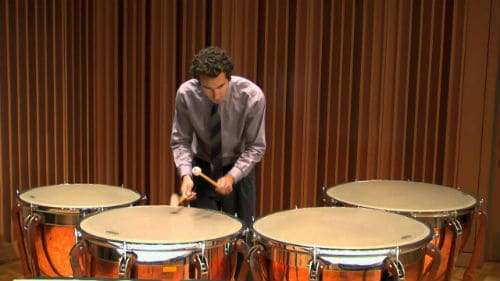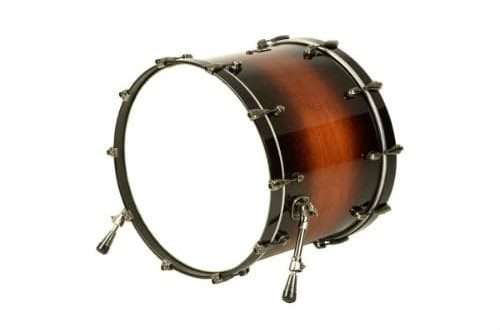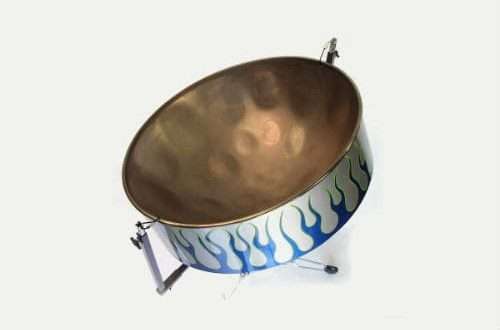
Timpani: description of the instrument, composition, history, sound, playing technique
Timpani belong to the category of musical instruments that appeared in ancient times, but have not lost their relevance so far: their sound can be so diverse that musicians, from classics to jazzmen, actively use the design, performing works of various genres.
What are timpani
The timpani is a percussion instrument that has a certain pitch. It consists of several bowls (usually from 2 to 7), resembling boilers in shape. The material of manufacture is metal (more often – copper, less often – silver, aluminum). The part turned towards the musician (upper), plastic or covered with leather, some models are equipped with a resonator hole at the bottom.
The sound is extracted by means of special sticks with a rounded tip. The material from which the sticks are made affects the height, fullness, and depth of sound.
The range of all existing varieties of timpani (large, medium, small) is approximately equal to an octave.

Устройство
The main part of the instrument is a voluminous metal case. Its diameter, depending on the model, variety is 30-80 cm. The smaller the body size, the higher the timpani sound.
An important detail is the membrane that fits the structure from above. It is held by a hoop fixed with screws. The screws can be tightened tightly or loosened – the timbre, the height of the extracted sounds depends on this.
The shape of the body also affects the sound: a hemispherical one makes the instrument sound louder, a parabolic one makes it muffled.
The disadvantage of models with a screw mechanism is the inability to change the setting during the Play.
Designs equipped with pedals are much more popular. A special mechanism allows you to change the setting at any time, and also has advanced sound production capabilities.
An important addition to the main design is sticks. With them, the musician hits the membrane, getting the desired sound. Sticks are made of various materials, the choice of which affects the sound (common options are reed, metal, wood).
History
Timpani are considered one of the oldest musical instruments on the planet, their history begins long before the advent of our era. Some kind of cauldron-shaped drums were used by the ancient Greeks – loud sounds served to intimidate the enemy before the battle. Representatives of Mesopotamia had similar devices.
War drums visited Europe in the XNUMXth century. Presumably, they were brought from the East by crusader warriors. Initially, the curiosity was used for military purposes: the battle of the timpani controlled the actions of the cavalry.

In the XNUMXth century, the instrument looked almost the same as modern models. In the XVII century he was introduced to the orchestras performing classical works. Famous composers (J. Bach, R. Strauss, G. Berlioz, L. Beethoven) wrote parts for timpani.
Subsequently, the instrument ceased to be exclusively the property of the classics. It is popular among pop singers, used by neo-folk jazz musicians.
Timpani playing technique
The performer is subject to only a few tricks of the Play:
- Single hits. A common method that allows you to use one or more reels at the same time. By the force of impact, the frequency of touching the membrane, the music lover extracts sounds of any available height, timbre, volume.
- Tremolo. Assumes the use of one or two timpani. Reception consists in the rapid repeated reproduction of one sound, two different sounds, consonances.
- Glissando. A similar musical effect can be achieved by playing music on an instrument equipped with a pedal mechanism. With it, there is a smooth transition from sound to sound.

Outstanding timpani players
Among the musicians who masterfully play the timpani, there are mainly Europeans:
- Siegfried Fink, teacher, composer (Germany);
- Anatoly Ivanov, conductor, percussionist, teacher (Russia);
- James Blades, percussionist, author of books on percussion instruments (UK);
- Eduard Galoyan, teacher, artist of the symphony orchestra (USSR);
- Victor Grishin, composer, professor, author of scientific works (Russia).





